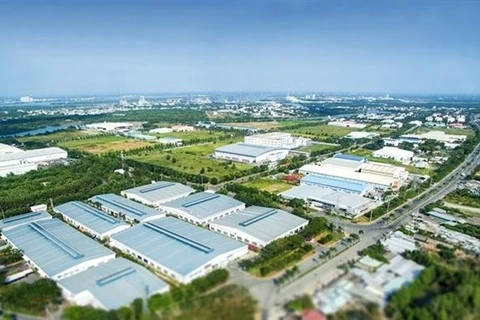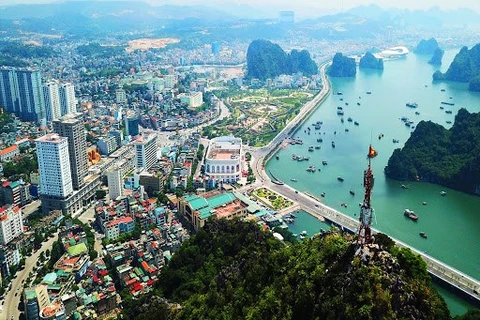Hanoi (VNA) - Despite difficulties brought by the COVID-19 pandemic, an opportunity is emerging for Vietnam to build the foundations of a more inclusive growth path, which leaves no one behind once recovery begins, according to the International Labour Organisation (ILO) in Vietnam.
The organisation made the statement in its April 21 briefing note on impact of COVID-19 on economic activity and employment in Vietnam’s labour market.
As the COVID-19 situation developed, the Vietnamese Government implemented increasingly stringent measures that have proven effective in containing the health crisis.
The country’s economic performance, however, is affected by measures adopted to confront the pandemic in Vietnam and across the world, as similar measures taken by other countries across the world have large-scale, indirect effects on Vietnam’s economy, said the ILO.
The organisation added that the reduction in economic output expected per sector over the first two quarters of 2020 is influenced by the vulnerability of each sector to the direct effects of COVID-19 containment, or indirect ones, or both.
“By the end of the second quarter, the crisis can affect the livelihood of 4.6 to 10.3 million workers, whether through a decline in working hours, in wages or, ultimately, job loss,” the ILO forecast.
It also envisaged two scenarios: one lower-impact scenario in which containment measures are eased during the second quarter, and one higher-impact scenario where the measures remain largely in place.
Workers in the informal economy will be severely affected due to their lack of state-funded social safety nets. Vulnerable workers are especially exposed to economic risk, since most of them work informally in low-paid occupations, and are unlikely to be able to count on savings. Female workers are over-represented in most sectors experiencing widespread reduction in economic activity.
The actual extent of livelihood loss will depend on the evolution of the pandemic and the measures taken by the Vietnamese Government and other countries. The unprecedented nature of the shock created by the COVID-19 pandemic makes it difficult to predict its developments by means of comparison with any past crises. Countries are finding themselves in uncharted territory, taking a variety of approaches to the containment, and adjusting them based on their own experience and that of others.
Vietnam has been working to ease restrictions in some parts of the country for one week. The measure excludes several provinces and the country’s main economic centres of Hanoi and Ho Chi Minh City. And where it applies, it does not remove social distancing rules altogether. Still, this measure will bring some relief to the direct channels of economic shock.
The IMF expects negative economic growth for 2020 in over 170 countries, with a partial recovery in 2021. However, countries across the world are taking bold actions to support their respective economies.
In Vietnam, the Government is unveiling a range of monetary and fiscal measures to keep enterprises afloat and safeguard incomes in the short term. Plans to push economic recovery in the medium and long term are taking shape.
In the meantime, however, Vietnam’s trade partners are in the midst of the COVID-19 fight.
In the medium term, even if Vietnam should choose to lift social distancing measures in the whole country, the crisis (whether directly or indirectly brought to the country’s economy) may affect overall consumption by eroding the financial means of individuals, and therefore the ability of domestic demand to sustain the economy.
Vietnam has addressed the COVID-19 health crisis with resolve and strength, and most importantly, with an aim of protecting all women and men and leaving no one behind. The same approach needs to be directed at economic, social and labour market challenges.
This is a critical time to ensure that socio-economic policy response is designed to be inclusive, is based on tripartite consultations, and reaches the most vulnerable on the labour market, the ILO noted./.
The organisation made the statement in its April 21 briefing note on impact of COVID-19 on economic activity and employment in Vietnam’s labour market.
As the COVID-19 situation developed, the Vietnamese Government implemented increasingly stringent measures that have proven effective in containing the health crisis.
The country’s economic performance, however, is affected by measures adopted to confront the pandemic in Vietnam and across the world, as similar measures taken by other countries across the world have large-scale, indirect effects on Vietnam’s economy, said the ILO.
The organisation added that the reduction in economic output expected per sector over the first two quarters of 2020 is influenced by the vulnerability of each sector to the direct effects of COVID-19 containment, or indirect ones, or both.
“By the end of the second quarter, the crisis can affect the livelihood of 4.6 to 10.3 million workers, whether through a decline in working hours, in wages or, ultimately, job loss,” the ILO forecast.
It also envisaged two scenarios: one lower-impact scenario in which containment measures are eased during the second quarter, and one higher-impact scenario where the measures remain largely in place.
Workers in the informal economy will be severely affected due to their lack of state-funded social safety nets. Vulnerable workers are especially exposed to economic risk, since most of them work informally in low-paid occupations, and are unlikely to be able to count on savings. Female workers are over-represented in most sectors experiencing widespread reduction in economic activity.
The actual extent of livelihood loss will depend on the evolution of the pandemic and the measures taken by the Vietnamese Government and other countries. The unprecedented nature of the shock created by the COVID-19 pandemic makes it difficult to predict its developments by means of comparison with any past crises. Countries are finding themselves in uncharted territory, taking a variety of approaches to the containment, and adjusting them based on their own experience and that of others.
Vietnam has been working to ease restrictions in some parts of the country for one week. The measure excludes several provinces and the country’s main economic centres of Hanoi and Ho Chi Minh City. And where it applies, it does not remove social distancing rules altogether. Still, this measure will bring some relief to the direct channels of economic shock.
The IMF expects negative economic growth for 2020 in over 170 countries, with a partial recovery in 2021. However, countries across the world are taking bold actions to support their respective economies.
In Vietnam, the Government is unveiling a range of monetary and fiscal measures to keep enterprises afloat and safeguard incomes in the short term. Plans to push economic recovery in the medium and long term are taking shape.
In the meantime, however, Vietnam’s trade partners are in the midst of the COVID-19 fight.
In the medium term, even if Vietnam should choose to lift social distancing measures in the whole country, the crisis (whether directly or indirectly brought to the country’s economy) may affect overall consumption by eroding the financial means of individuals, and therefore the ability of domestic demand to sustain the economy.
Vietnam has addressed the COVID-19 health crisis with resolve and strength, and most importantly, with an aim of protecting all women and men and leaving no one behind. The same approach needs to be directed at economic, social and labour market challenges.
This is a critical time to ensure that socio-economic policy response is designed to be inclusive, is based on tripartite consultations, and reaches the most vulnerable on the labour market, the ILO noted./.
VNA

























